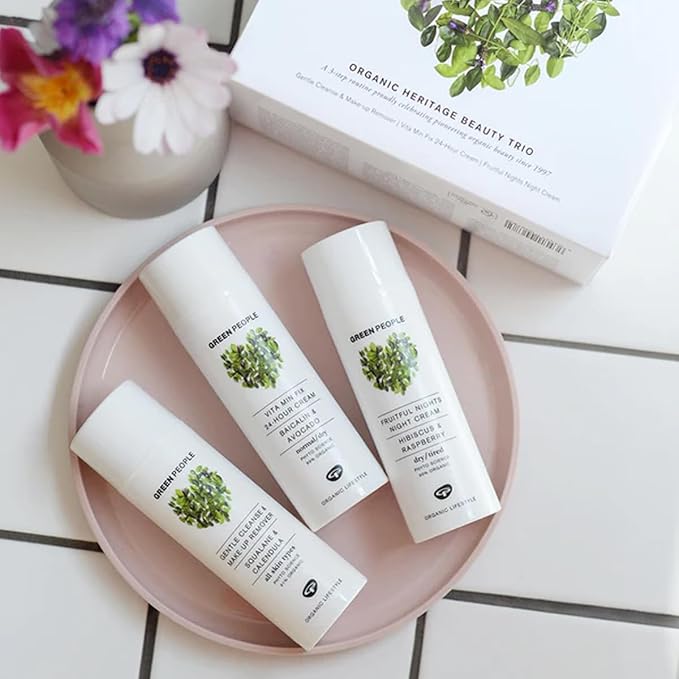First-time visitors to Georgia often want a clear, stress-free introduction that balances culture, nature and everyday comfort. Many begin in Tbilisi, where the airport sits close to the city centre and the compact Old Town allows easy walking between the sulphur baths, Narikala cable car and riverside viewpoints. Sustainable travel here means choosing walkable routes, local cafés and small hotels that support the community. Short trips to Mtskheta add historical depth without long drives, while Kakheti introduces wine traditions through slower, guided visits that reduce unnecessary transport. Some travellers combine Tbilisi with Batumi, using efficient internal travel rather than multiple flights. At Friendly Turtle EcoBlog, we encourage first-time visitors to travel Georgia responsibly by pacing itineraries, staying in family-run guesthouses, joining small-group tours and respecting local ecosystems. These mindful choices help reduce environmental impact while still offering a rich, authentic experience of Georgia’s cities, landscapes and traditions.
Share your articles with us and get published! Reach out at hello@friendlyturtle.com.
How to Choose Canvas Paintings That Encourage a Green Lifestyle

Canvas paintings add personality to a room, conveying mood and character without overwhelming the space. For art and earth lovers, what they perceive on walls is not necessarily about style. It's not merely subject or color when selecting a piece of artwork to display it is also about what a painting is made of, from where, and who makes it. Art can be strong, and when combined with green living, art gets incorporated into a home's ethical fabric.
With mass-produced products filling all corners of the home decor marketplace, it is easy to remember that each piece in a residence leaves a mark. Canvas pieces of art, based on source and materials used, can add to waste on the planet or be symbols of responsible craftsmanship. This article is a guide for choosing canvas pieces of art that bring inspiration in a way that honors the world, with the emphasis on material, source, and lasting worth.
Materials Matter – What’s Behind the Canvas
When discussing sustainable living, materials are usually the first to start. In painting, the materials behind the beauty—canvas, wood, and paint—have environmental impact. From untreated cotton to synthetic finishes, each plays a role in the footprint of the finished piece. Being mindful with these decisions prevents unnecessary waste and health-damaging emissions.
Environmental Cost of Conventional Materials
Most commercially produced canvas paintings use polyester blends for the canvas, petroleum-based acrylics, and industrially made wood frames. Synthetic products rely on high-energy processes, have a tendency to carry chemicals, and degrade very slowly after disposal. Paint can hold solvents or heavy metals that have dangerous vapors, both in making them and mounted on the wall.
These are generally masked issues, disguised under luxurious brushstrokes and luscious sheens. The invisible component of artwork can contribute meaningfully to indoor air quality, use of nonrenewable resources, and chemical exposures, though.
Better Material Alternatives
A better canvas starts with earthy materials. Choose:
- Organic cotton: Cultivated without chemical pesticides or fertilizers.
- Hemp: Naturally resistant to pests, hemp requires less water than cotton and gives a sturdy texture.
- Linen: Derived from flax, linen canvas has been utilized for centuries to create high-caliber art and can last generations.
Pair these fabrics with ecologically responsible wood, such as:
- FSC-certified wood: Comes from sustainably managed forests.
- Reclaimed wood: Salvaged timber that reduces the demand for new lumber.
For paints, water-based options reduce harmful emissions and waste. Brands now offer non-toxic acrylics and earth-derived pigments for artists seeking clean materials.
Eco Certifications and Reading Labels
Certifications can help buyers identify responsibly made products. Look for:
- GOTS (Global Organic Textile Standard) for organic fabric.
- OEKO-TEX for textiles tested against harmful substances.
- FSC for wood sustainability.
Although not always visible on finished pieces, these standards often appear in product descriptions from transparent sellers.
Artists Using Upcycled Materials
Some artists are redefining sustainability by using reclaimed canvas or turning discarded items into textured, layered works. This approach avoids virgin material use entirely and gives new life to old surfaces. These one-of-a-kind pieces often tell stories not just through the painting, but through the surface itself.
Conscious Sourcing – Who You’re Buying From
The journey of a painting doesn’t begin with the canvas or brush it begins with the artist. Where and how you buy artwork influences its impact. Beyond materials, the production model, transport distance, and ethical stance of the seller all affect sustainability. Supporting the right creators and platforms adds dimension to the artwork’s story and to its meaning inside the home.
1. Supporting Small-Scale and Local Artists
Art purchased directly from the artist carries a traceable origin. This connection often means:
- Less packaging and fewer shipping miles.
- Better transparency about materials and process.
- The opportunity to support someone pursuing a thoughtful craft.
Buying locally or within one’s region can reduce environmental stress related to international logistics. It also helps grow the value of handmade work within communities.
2. Nature-Inspired Creators and Themes
Many artists who focus on environmental themes naturally choose better practices. Their work often features organic forms, plant life, or environmental messages and these subjects tend to align with eco-conscious values. These artists are more likely to share how their materials were sourced and whether their practice minimizes waste.
A painting with recycled paper collage elements or earth-toned natural pigments can reflect more than beauty it can signal a deeper respect for life and ecology.
3. Transparency and Trust
When sellers and creators openly share how their work is made, it builds trust. Look for shops and platforms that:
- List ingredients or materials.
- Mention fair labor or local production.
- Use minimal packaging or carbon-neutral delivery.
A canvas painting that stands out doesn’t need to shout it simply needs to be honest. Transparency from the artist or seller often translates into quality, durability, and better ethics.
4. Pre-Loved Canvas Art
Secondhand shops, estate sales, and vintage markets can be excellent sources for meaningful pieces. Choosing art that already exists means no additional materials were used, and you prevent something beautiful from being discarded. Pre-loved art can be reframed or restored easily, giving it new relevance in a new home.
Lasting Value – Choosing Art That Endures
Sustainable living doesn’t stop at the moment of purchase. It extends into how long something remains meaningful or functional in a home. Canvas paintings are no different. Choosing a piece that holds personal or emotional value can help it stay on the wall for years, resisting short-lived trends and disposable design cycles.
Choose Timeless Over Trendy
Mass-produced art often follows fast-moving design trends. But the excitement fades quickly, and many of these pieces are discarded or replaced within a year or two. Slower, more intentional selection helps prevent waste and gives art a deeper purpose.
Ask before buying:
- Does this piece reflect something important to you?
- Would it still feel relevant in five or ten years?
- Could it move with you or be re-hung in a new space?
Emotional Connection and Personal Relevance
Story paintings will also stay in a home longer. If they take you back to a time in your life, celebrate a cherished place, or express a personal belief, the meaning of a painting can exceed its role as decoration.
When paintings are chosen with passion, they are identity to the home. They are charged with memory, emotion, and meaning that don't fade with changing style.
Caring for Your Canvas Art
Good stewardship extends a painting's life:
- Prevent fading by avoiding direct sunlight.
- Prevent humid rooms, like bathrooms.
- Gently dust the artwork from time to time with a soft-bristled brush or soft cloth.
In temporary storage of the artwork, drape it with breathable material rather than plastic, and not near extreme temperatures. Eco-friendly framing materials like reclaimed wood or bamboo not only conserve the art but your integrity as well.
Sharing Art Beyond One Household
If the painting is not to your taste, it does not need to be thrown in the garbage. Give it away, trade it as a present, or barter it off with a pal. New value is created by art when it is placed in new places. Art going from hand to hand between a people creates a culture of reuse and enjoyment.

Conclusion
Canvas artworks aren't color and texture purpose. Choosing artwork with common environmental values adds more richness to them in a home. From threads on canvas to artist integrity, every decision is building a more sustainable relationship with beauty. Meaningful art isn't perfection it's care, integrity, and enduring value.
0 comments
Let customers speak for us
Blog posts
A calm, multifunctional garden can be more than a pretty backdrop it can become a practical extension of your home that supports slow mornings, outdoor meals, and genuine downtime. In this Friendly Turtle EcoBlog guide, we look at simple, sustainable ways to shape an outdoor space that feels organised, welcoming, and easy to use throughout the week. Start by creating clear “zones”: a quiet seating corner for reading, a dining spot for relaxed lunches, and a flexible open area for play or potting. Light-touch structures, such as an airy pergola or a sheltered veranda, add definition without blocking daylight, making the garden usable in changeable weather. Keep the mood restful with layered planting: evergreens for year-round structure, seasonal flowers for colour, and lightly scented herbs near paths. Choose reclaimed or recycled materials where possible, add soft warm lighting, and reduce water waste with mulch and a simple rainwater butt. The result is a garden that feels calm, functional, and kinder to the planet.
Finding the right mental health support in Woodland Hills starts with checking credentials, treatment approach and access to care. Look for licensed clinicians with training in evidence-based therapies such as CBT or DBT, and ask whether programmes offer coordinated psychiatry, talking therapy and crisis support when needed. The best providers also explain your options clearly, from outpatient sessions to more structured day programmes, and may include complementary practices that support recovery, such as mindfulness, movement and nutrition guidance. At Friendly Turtle EcoBlog, we often explore how everyday choices shape wellbeing; this guide applies the same practical lens to mental health care, helping you compare services, understand what ‘holistic’ really means, and choose a setting that feels safe, respectful and tailored to your needs. It also highlights practical questions to ask about availability, confidentiality, fees and insurance, so you can make a confident, informed decision.



